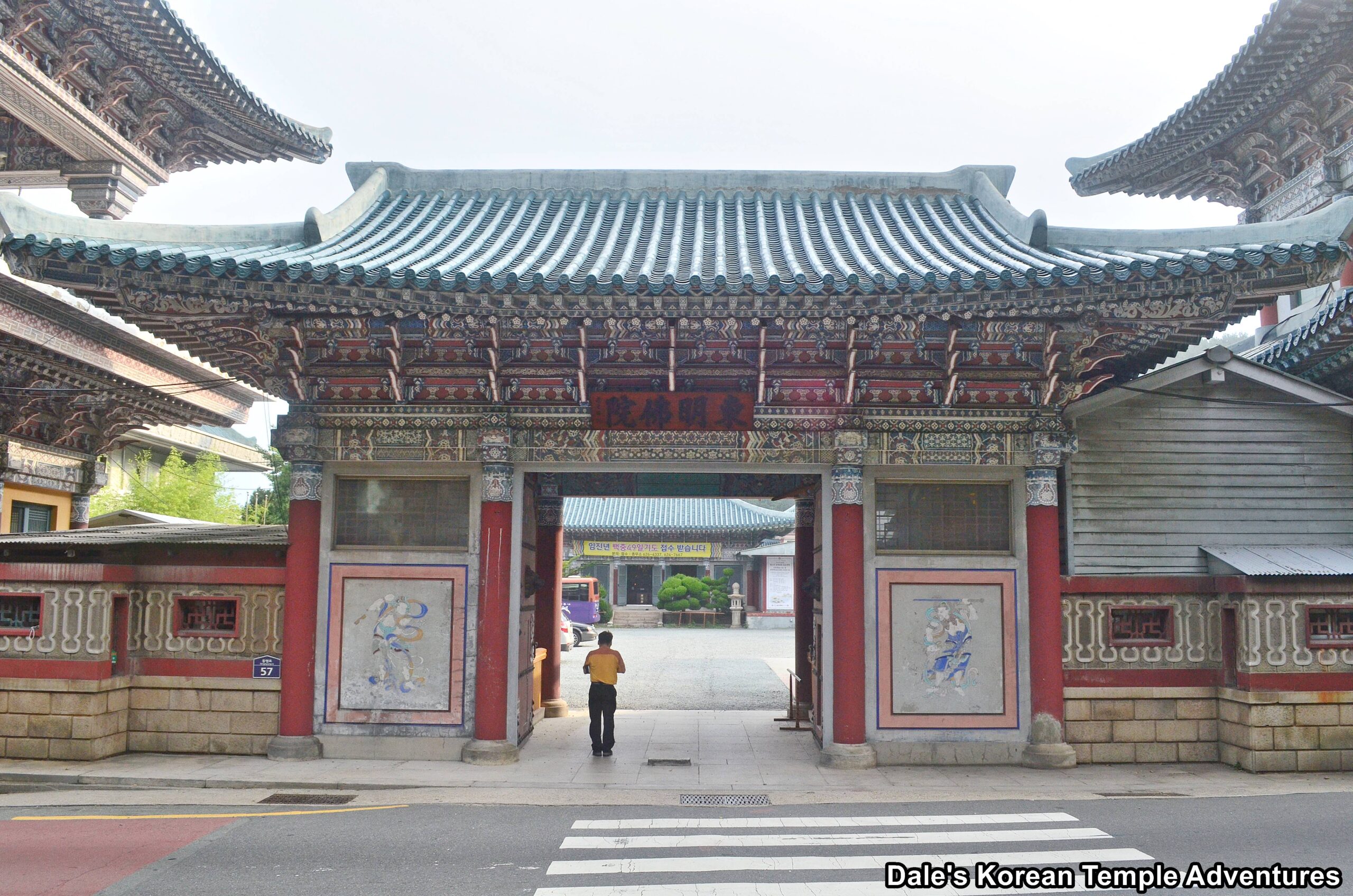
Temple History
Dongmyeong Bulwon is located in the southern part of Busan in Nam-gu. In fact, it’s situated just south of the U.N. Cemetery in Busan and just north of Mt. Bongorisan (173.3 m). The name of the temple might sound a bit strange because it doesn’t end with the common “sa” suffix. Instead, the temple is considered a “Bulwon” which means “The Buddha’s Oath” in English. What this specifically means is a reference to the Buddha making an oath to save all sentient beings.
Dongmyeong Bulwon is a modern temple. It was first opened on May 22nd, 1977. In total, the Dongmyeong Bulwon grounds measure 2,700 pyeong, or 9,000 square metres in size. Dongmyeong Bulwon was built by the late Chairman of Dongmyeong Wood, Kang Seok-jin. It was built for the good luck of the ten thousand families of the workers that worked at the Dongmyeong Wood factory. It was also built for Kang’s deceased parents and the prosperity of Korea.
One of the temple’s key features is the massive Brahma Bell that’s the largest of its kind in Korea. It weighs an impressive twenty-seven tons, which is six tons more than the famed Emile Bell in Gyeongju. As for its design, it has Bicheon (Flying Heavenly Deities) adorning it, and it’s impressive in both size and beauty.
Temple Layout
When you first arrive at the temple, and turn left off of the busy Busan street, you’ll be greeted by one of the more impressive Cheonwangmun Gates in all of Korea. Sitting inside of this gate are four towering, and menacing, statues of the Four Heavenly Kings. They are dressed regally; and yet, they are quite intimidating. They are trampling underfoot some of the more diabolical demons that you’ll find inside a Cheonwangmun Gate. This gate is adorned with a large lion-headed door knocker, as well as a metal manja (swastika). It also has two anime-like paintings of Miljeok Geumgang and Narayeon Geumgang on the temple courtyard side of the Cheonwangmun Gate, as well.
As you first enter the temple courtyard, you’ll notice the Jong-ru (Bell Pavilion) to your left. This is the structure that houses the amazing twenty-seven ton Brahma Bell. To your right, on the other hand, is the Gwaneum-jeon Hall. Housed inside this temple shrine hall, you’ll find a tranquil statue dedicated Gwanseeum-bosal (The Bodhisattva of Compassion) seated in the centre of the main altar. In Gwanseeum-bosal’s right hand, you’ll find that she’s holding a medicinal bottle of ambrosia. Joining this seated statue of Gwanseeum-bosal on the main altar is a dongja (attendant) to the right and a fierce image of Yongwang (The Dragon King) to the left.
All the structures and statues at Dongmyeong Bulwon are quite large, but it’s the mammoth two-story Daeung-jeon Hall that’s the largest. In fact, it’s one of the largest main halls that you’ll find at a Korean Buddhist temple. Unfortunately because it’s made from concrete, some of the Daeung-jeon Hall’s exterior paintings are already fading. As a result, the exterior isn’t the most aesthetically pleasing to the eye. However, with all that being said, the cavernous interior of the Daeung-jeon Hall is beautiful. Sitting on the main altar are three large statues. Sitting in the centre of this triad is Seokgamoni-bul (The Historical Buddha). This image is joined on either side by Yeondeung-bul (The Past Buddha) and Mireuk-bul (The Future Buddha). Looking up at the ceiling of the Daeung-jeon Hall, you’ll notice an impressive dragon mural. To the right of the main altar is a painting and statue dedicated to Jijang-bosal (The Bodhisattva of the Afterlife). And to the left is a rather plain Shinjung Taenghwa (Guardian Mural).
Out in front of the Daeung-jeon Hall, you’ll find two highly original pagodas. The pagoda to the left is Deokmang-tap, while the pagoda to the right is named Budeok-tap. Both pagodas are nearly identical in appearance. These pagodas are five stories high; and rather interestingly, between the fourth and fifth story, you’ll find four smaller sized pagodas. They almost look like a rook in chess.
To the left of these pagodas and the Daeung-jeon Hall, you’ll find two additional temple shrine halls. The first is the Nahan-jeon Hall which houses sixteen beautifully crafted images of the Nahan (The Historical Disciples of the Buddha). These statues then surround a large golden statue of Seokgamoni-bul that sits in the centre of the main altar. And to the right of the Nahan-jeon Hall is the Geukrak-jeon Hall. This temple shrine hall is a little hidden behind shrubbery that grows extensively throughout the entire temple grounds. Sitting on the main altar of the Geukrak-jeon Hall is a statue of Amita-bul (The Buddha of the Western Paradise). This statue is flanked on the main altar by Gwanseeum-bosal and Daesaeji-bosal (The Bodhisattva of Wisdom and Power for Amita-bul).
Almost hidden away, and up a set of stairs to the left of the Daeung-jeon Hall, is an upper courtyard that houses three shaman shrine halls. The first of these three is the Dokseong-gak Hall. The large statue of Dokseong (The Lonely Saint) that sits inside this shaman shrine hall wears long, regal clothes. The next shaman shrine hall is the Chilseong-gak Hall. Housed inside this temple shrine hall is a beautiful statue and painting dedicated to Chilseong (The Seven Stars). And the final shaman shrine hall at Dongmyeong Bulwon is the Sanshin-gak Hall. Housed inside this hall is another large sized statue; this time, dedicated to Sanshin (The Mountain Spirit). Sanshin is joined by an even larger statue of his accompanying tiger.
How To Get There
To get to Dongmyeong Bulwon, you’ll first need to take the Busan subway until you get to Daeyeon Station, which is stop #213. From there, go out exit #10 and walk towards the U.N. cemetery, which will take about fifteen minutes. From the U.N. cemetery, you’ll need to walk an additional fifteen minutes towards the mountains. The signs along the way should help guide you towards the Dongmyeong Bulwon temple grounds.
Overall Rating: 7/10
Everything at Dongmyeong Bulwon seems to be large in size. With its massive statues inside each of the temple shrine halls. Additionally, have a look at the impressive Cheonwangmun Gate (both inside and out), the statue of Yongwang inside the Gwaneum-jeon Hall, and the pair of uniquely designed stone pagodas out in front of the Daeung-jeon Hall. The temple grounds are a peaceful escape from the hustle and bustle of city life. The only drawback is that most of the temple structures appear to be made of concrete.
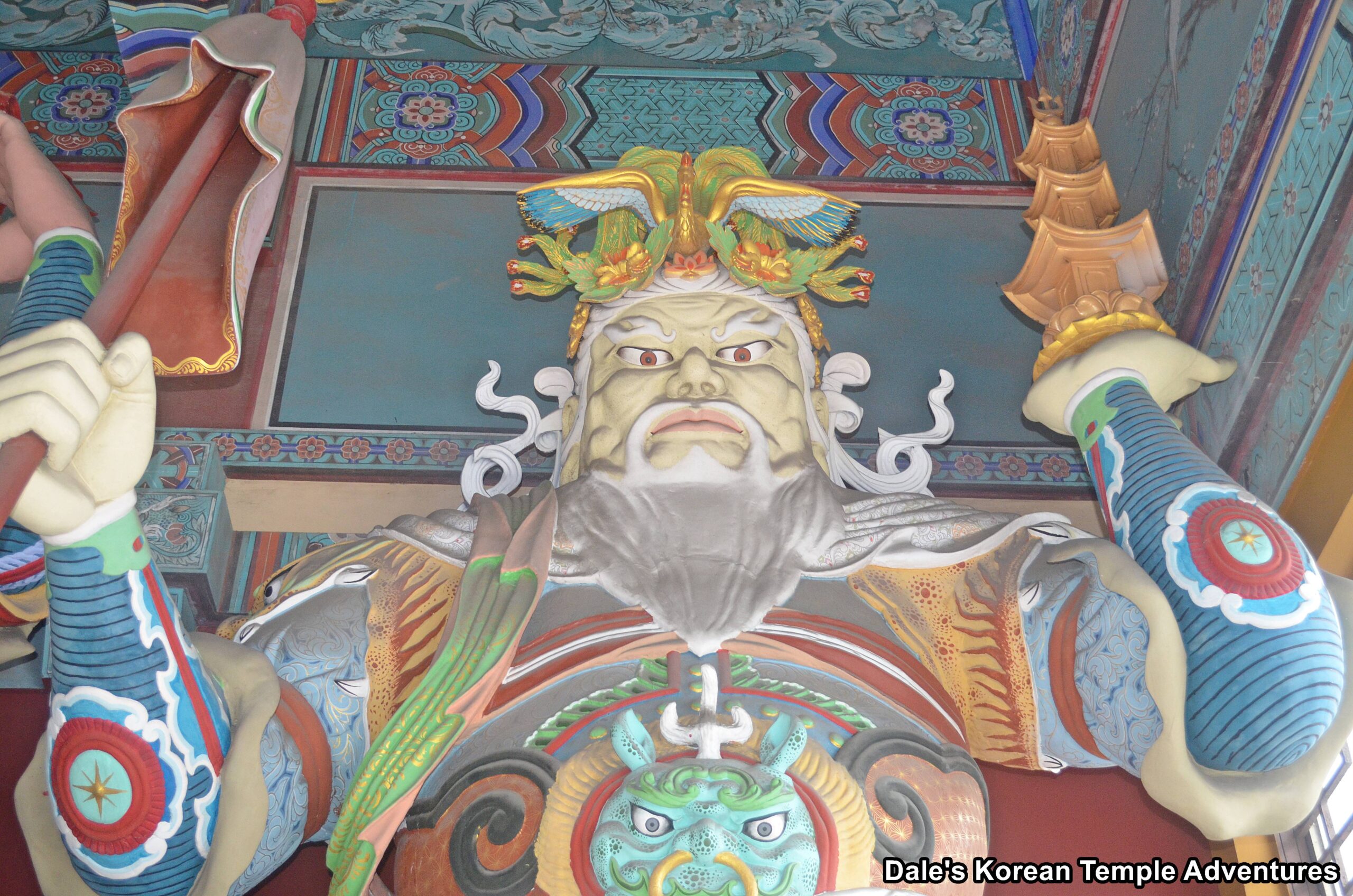
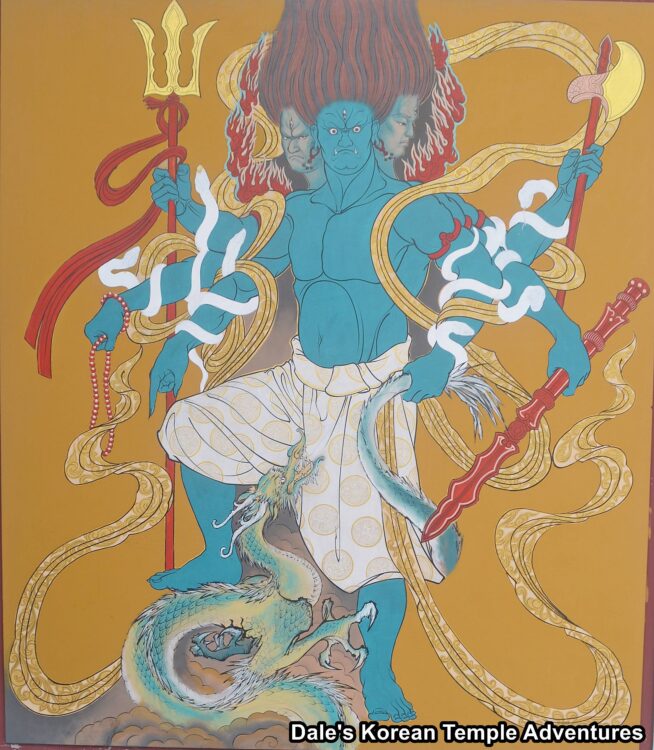
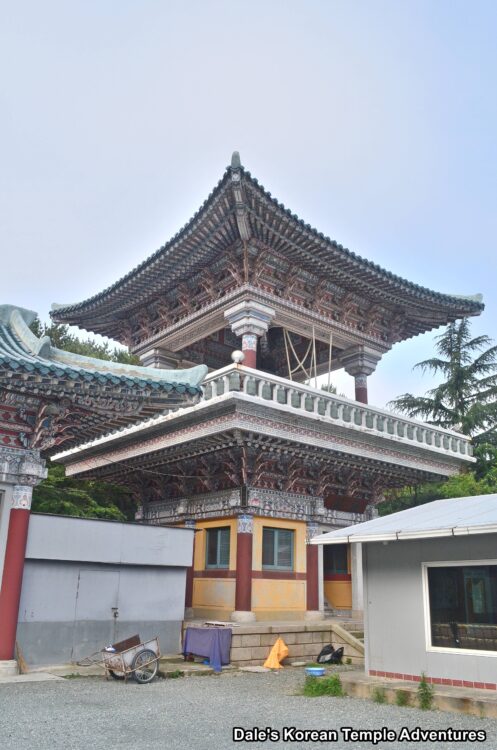
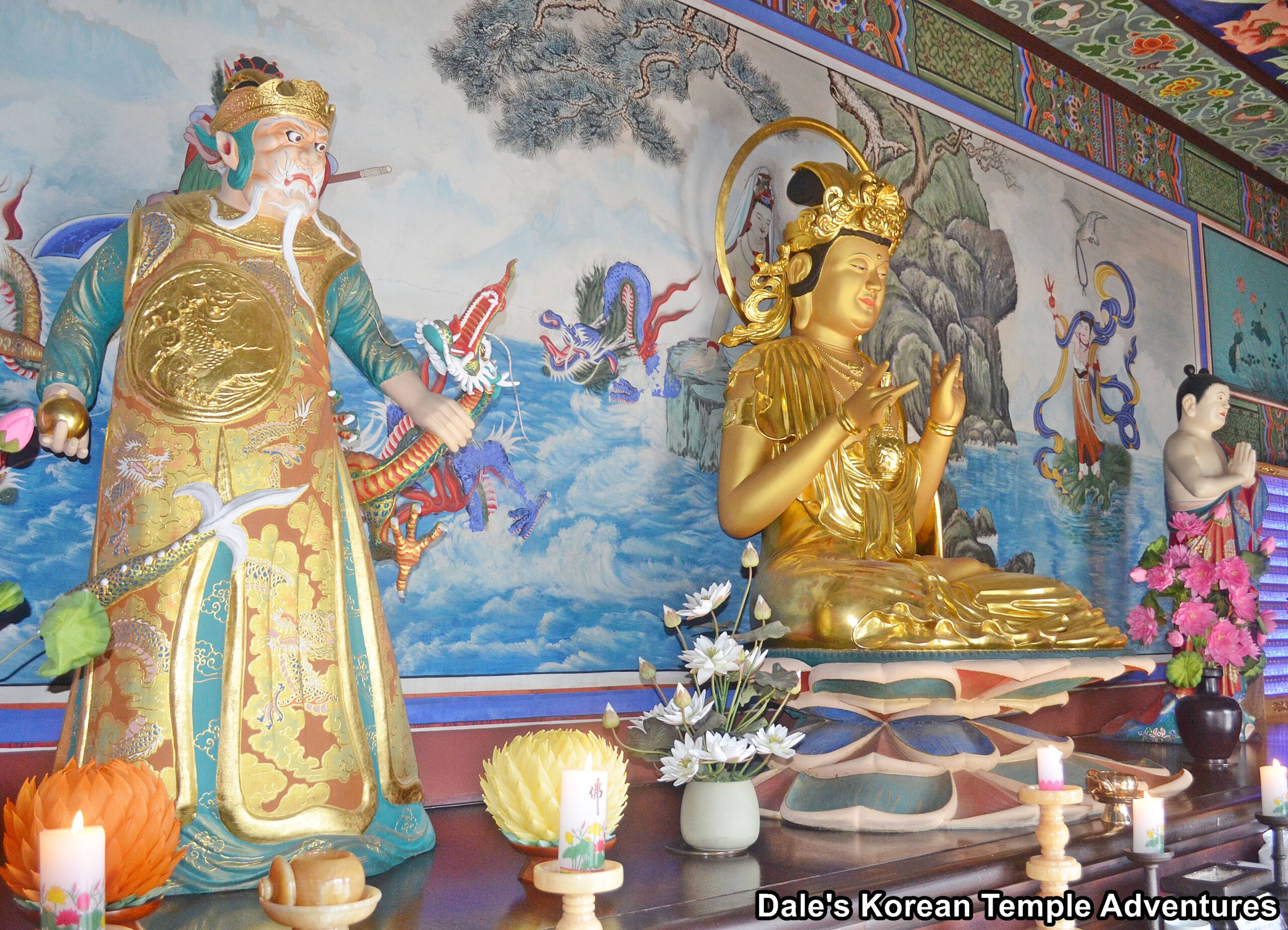
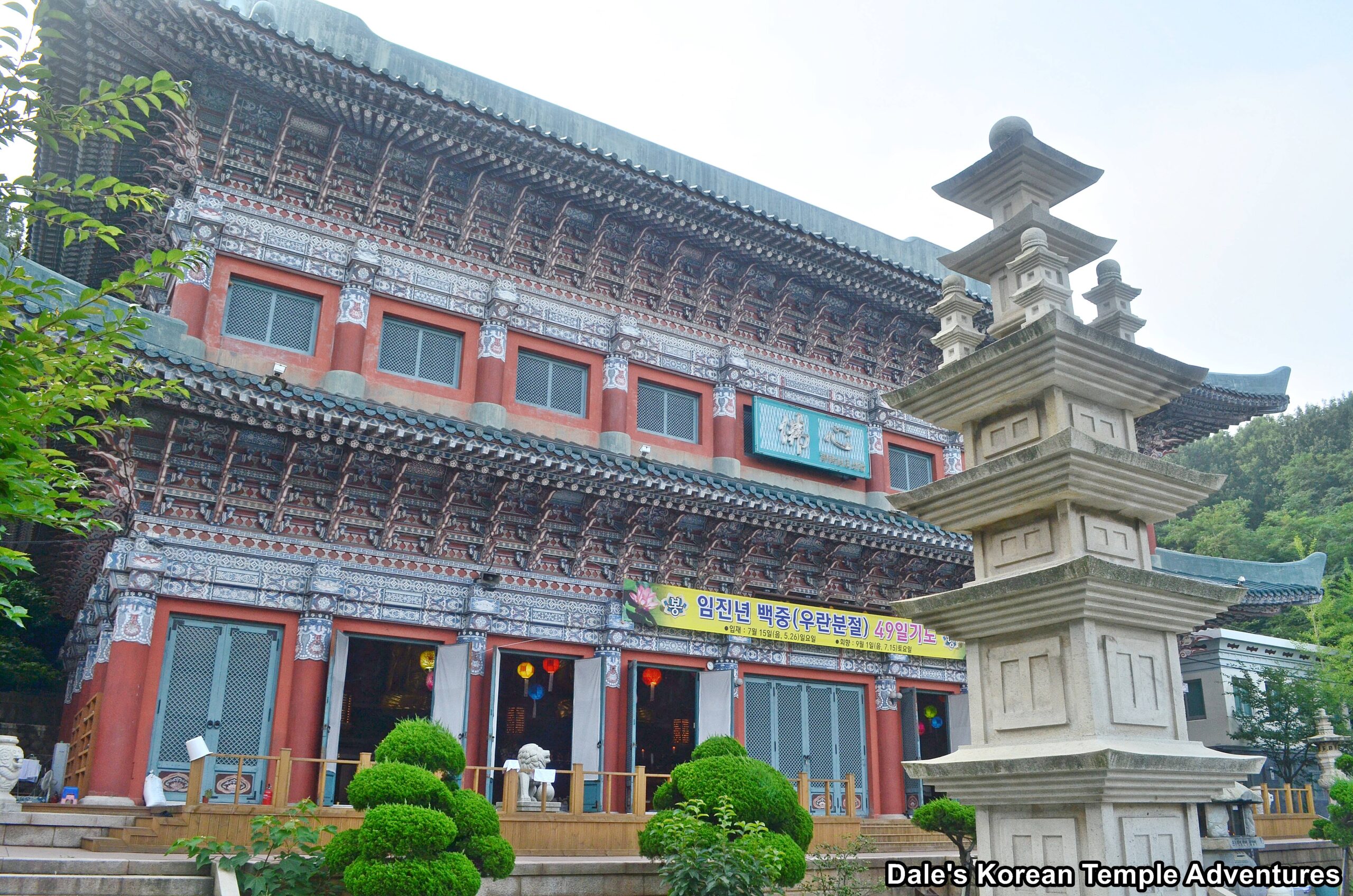
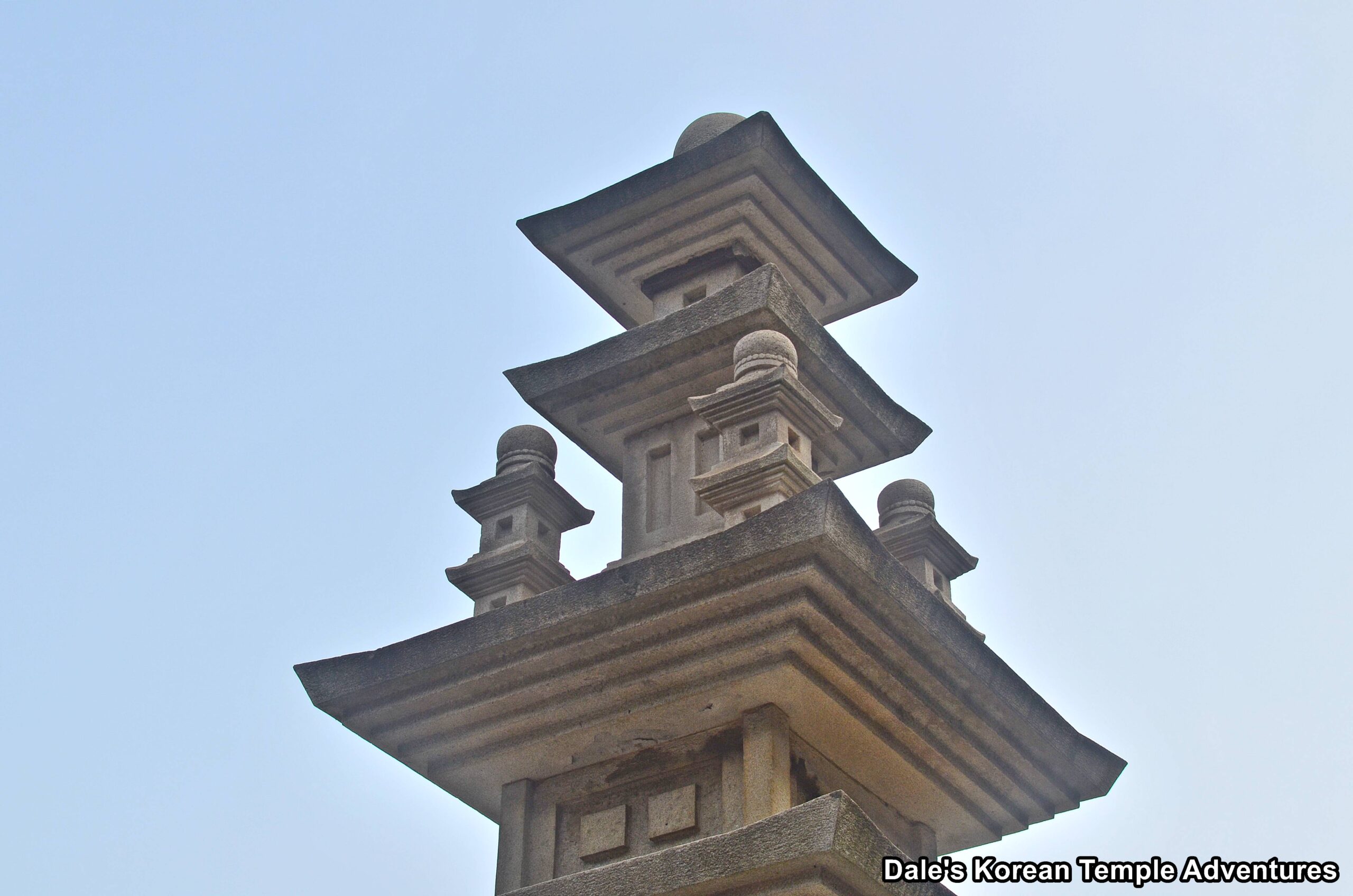
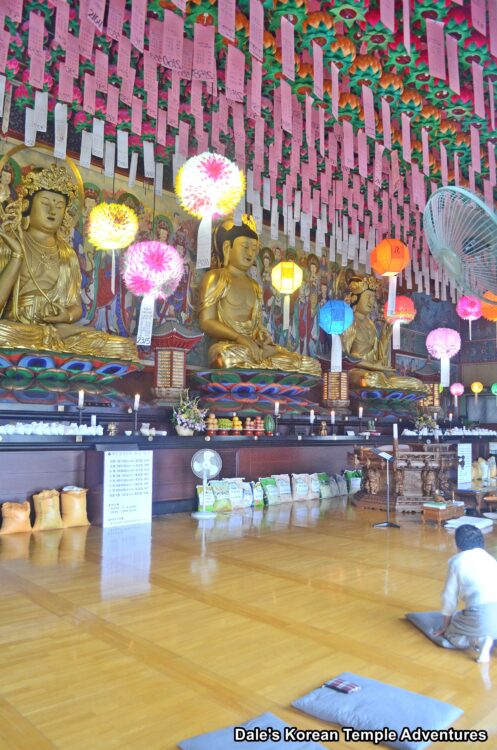
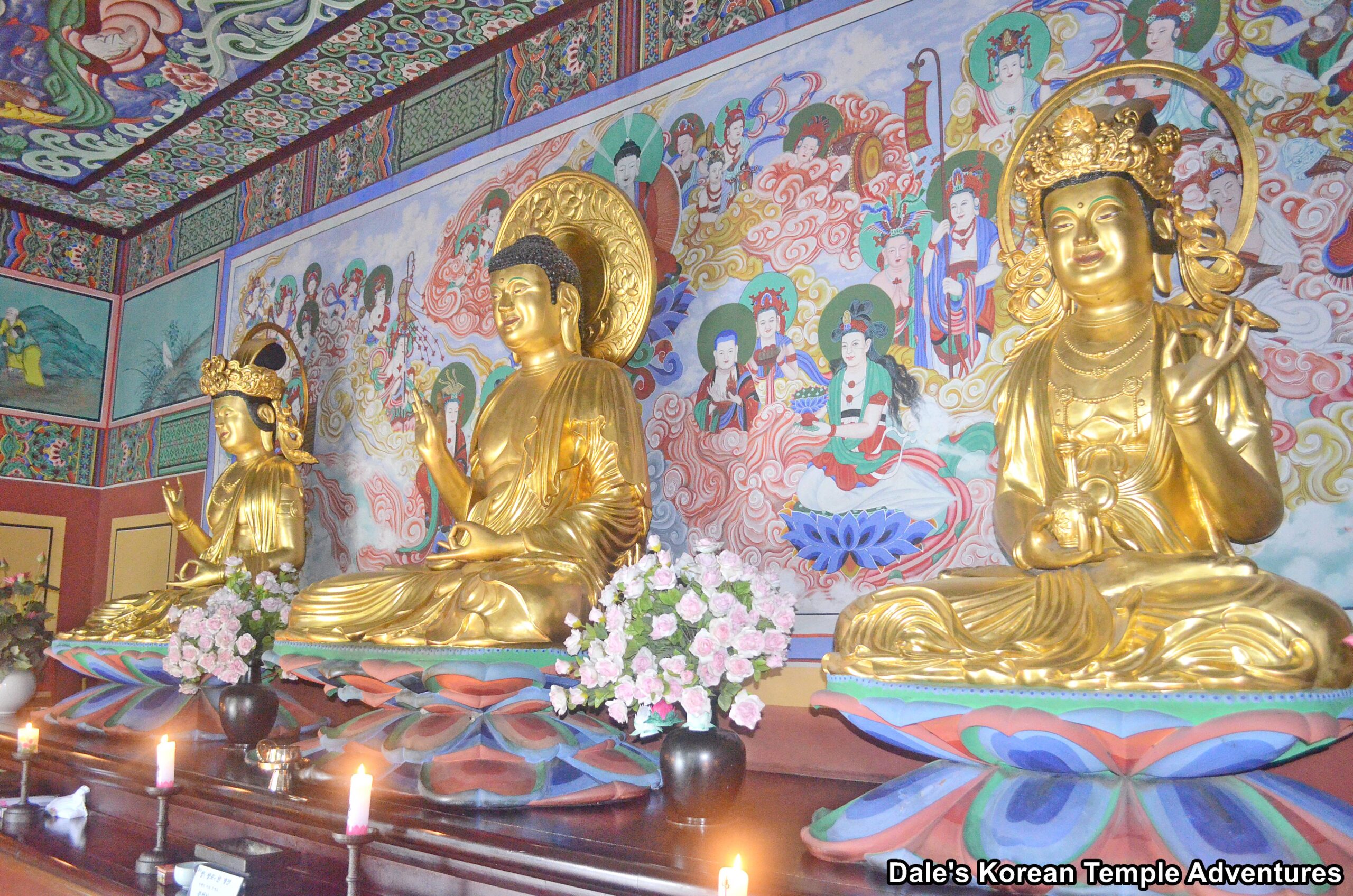
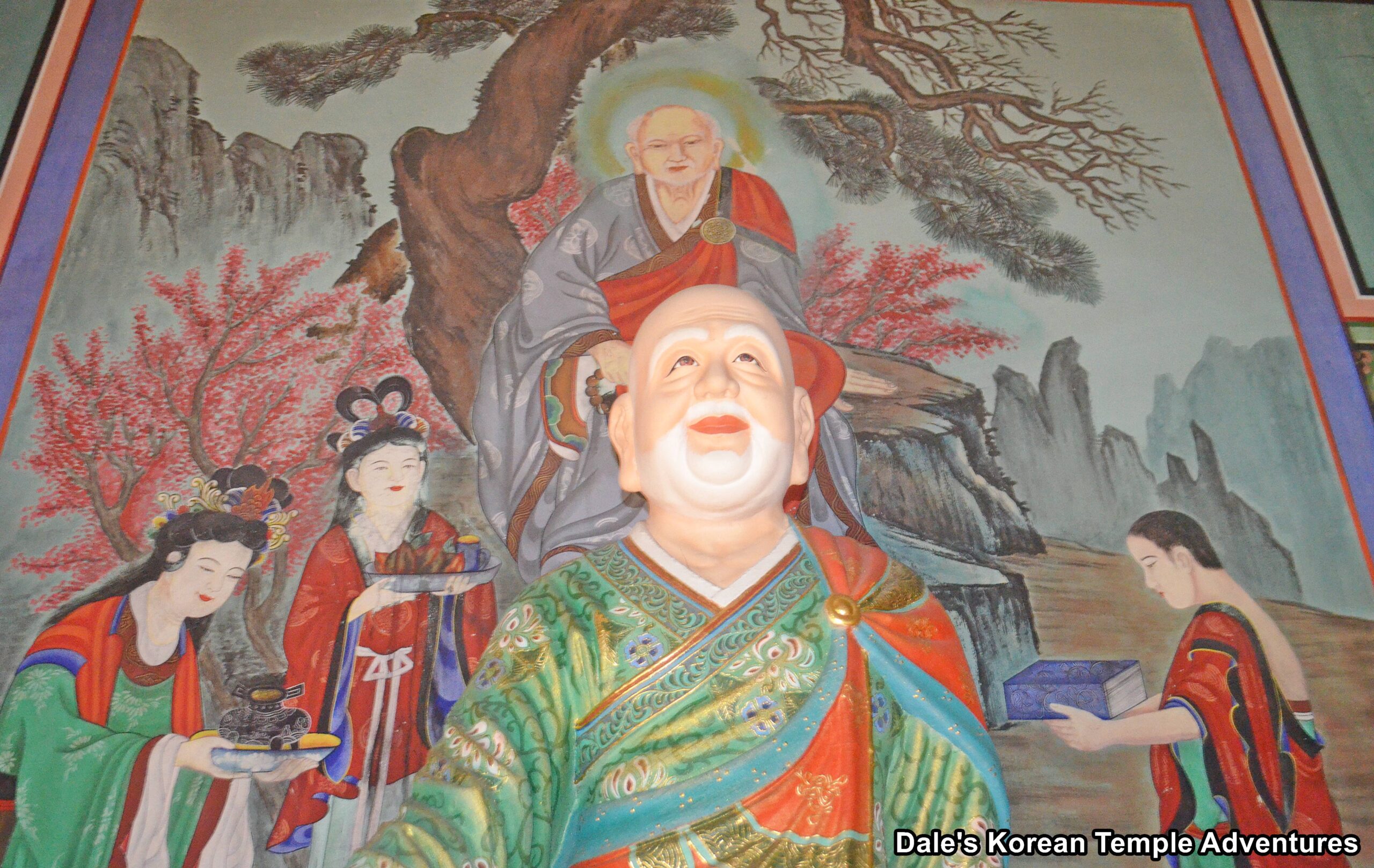
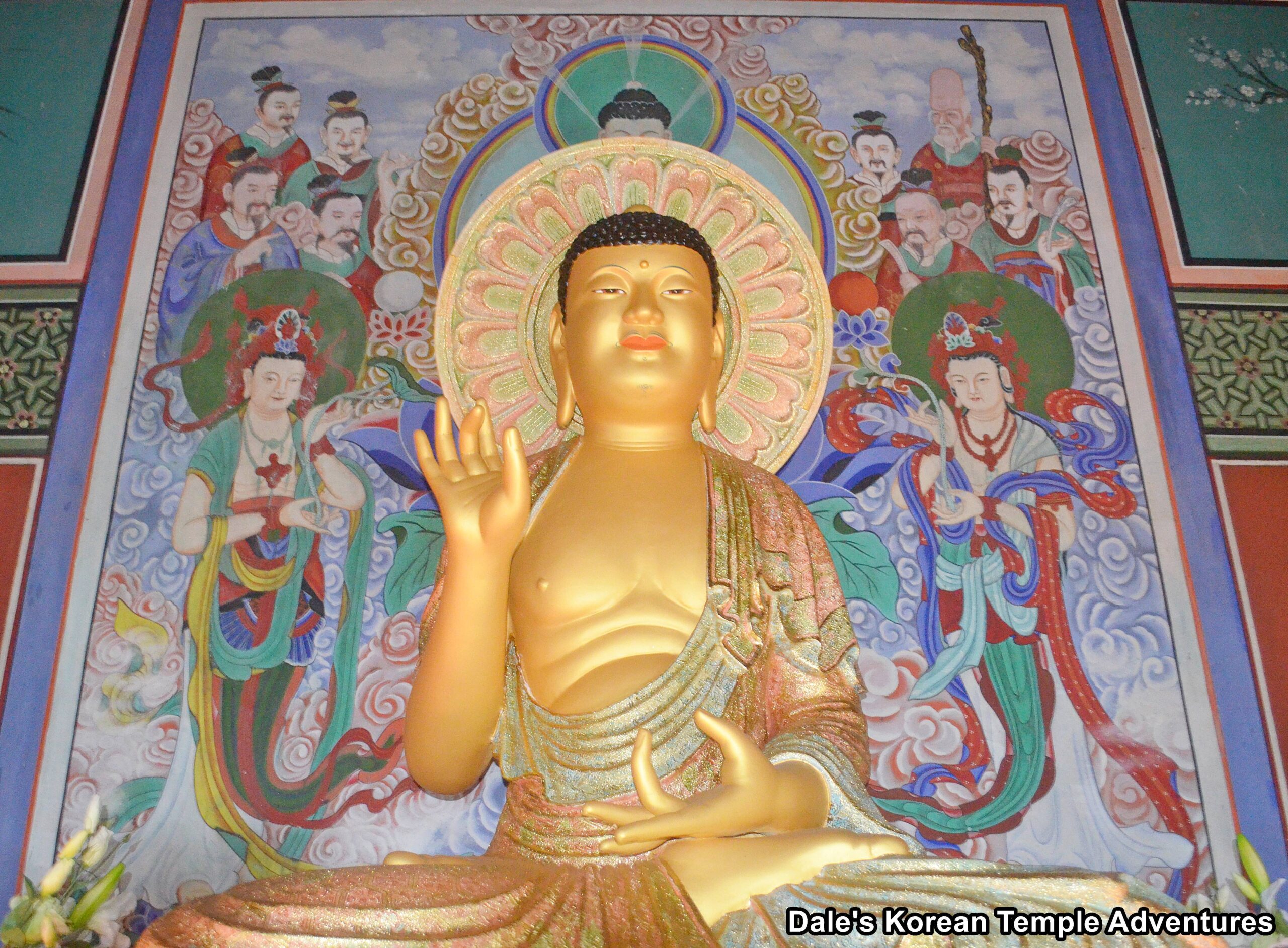
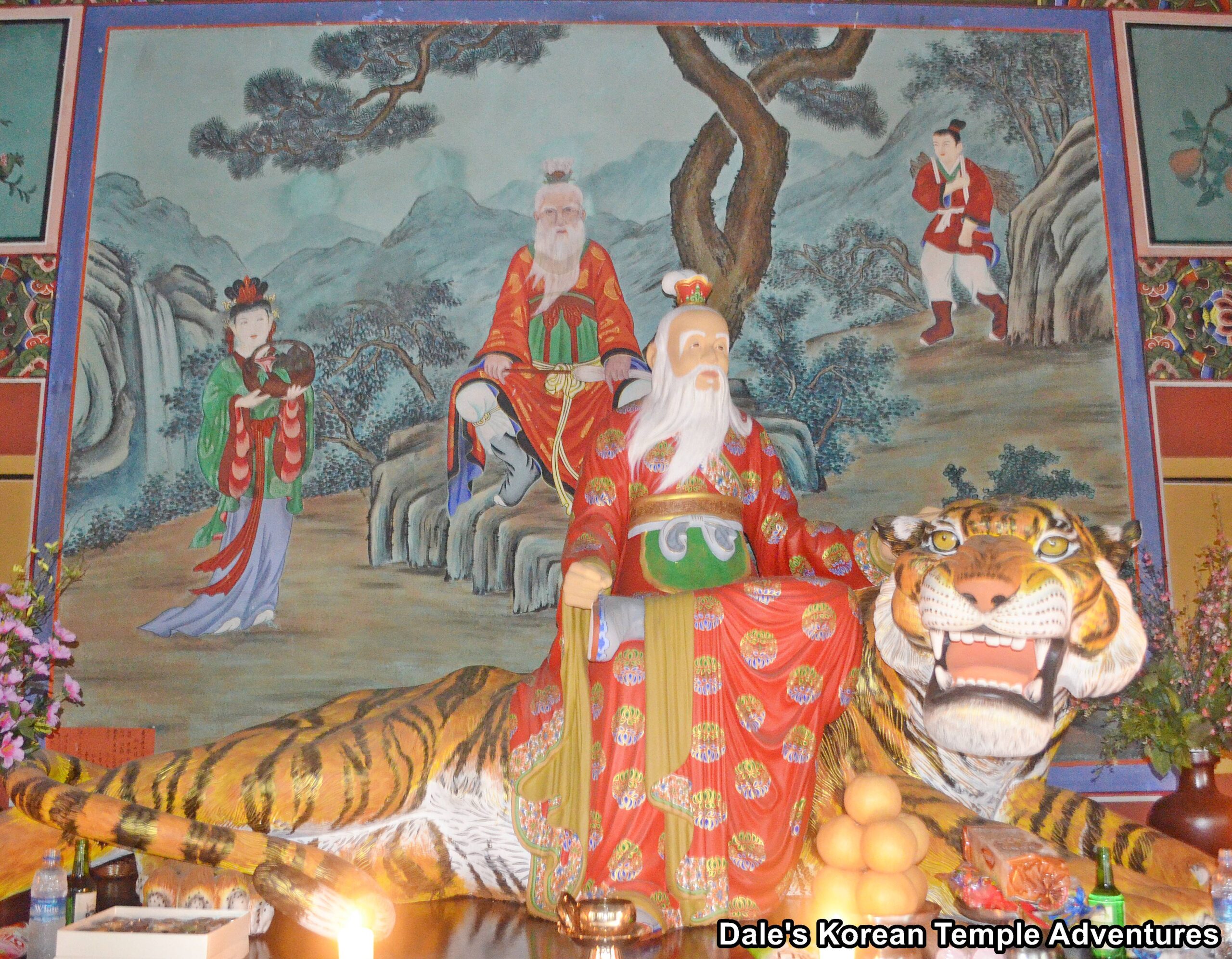


Recent comments